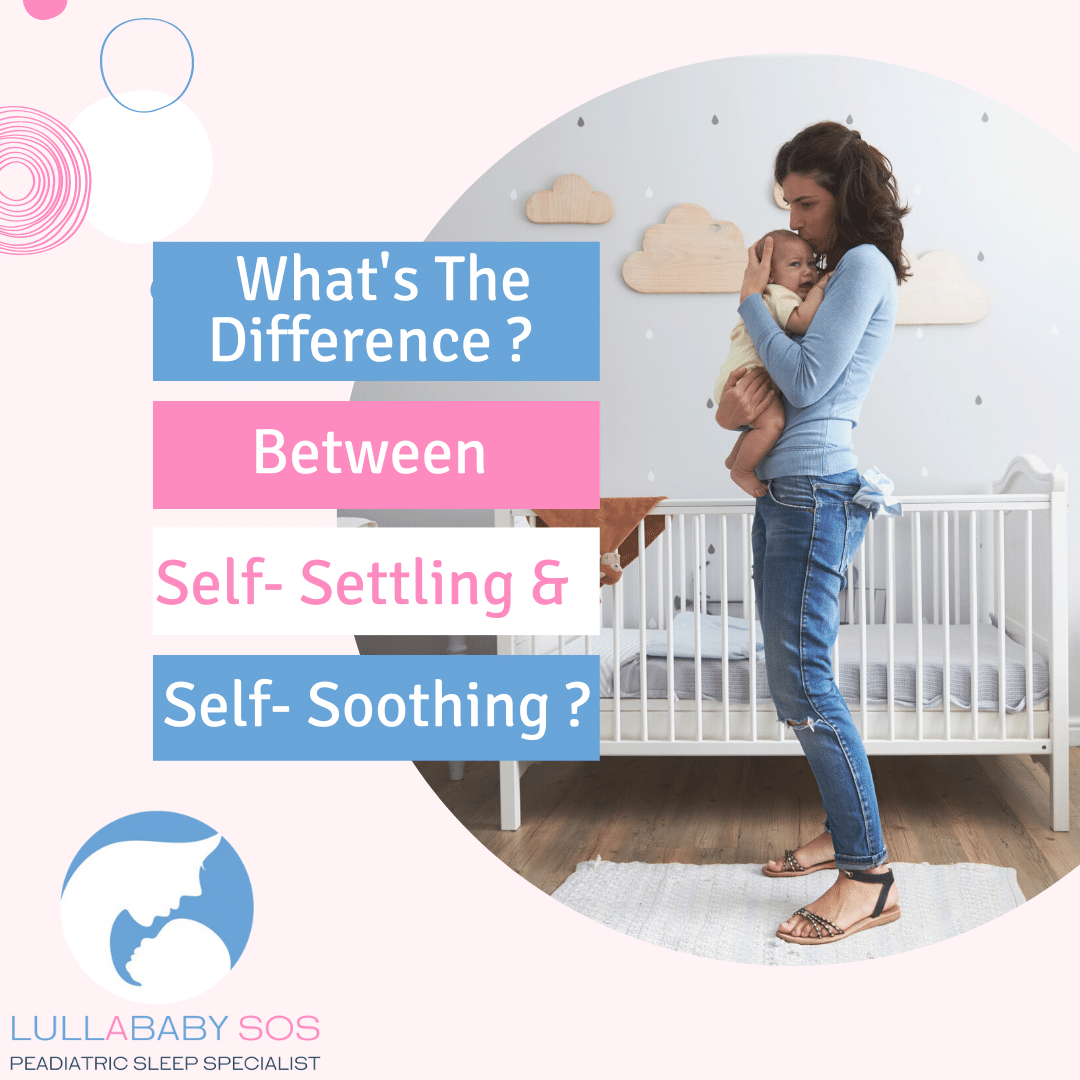Being a mum is an incredible experience, but it also comes with its fair share of challenges, especially when especially when it comes to sleep. As a sleep specialist with almost 20 years of experience, I understand the frustration and confusion that moms face when it comes to conflicting advice on sleep training for babies. In this blog post, I want to have an open and supportive conversation about the difference between self-soothing and self-settling. My aim is to provide guidance to exhausted moms who are looking for ways to support their child’s sleep without resorting to traditional sleep training methods.
The Overwhelming Landscape:
In recent years, the field of sleep consultants and experts has grown exponentially, leading to an overwhelming amount of information and opinions on baby sleep. Unfortunately, this abundance of voices has often resulted in a negative and toxic environment for parents who are seeking advice. Exhausted moms are met with conflicting comments, with some claiming it’s normal for a child to wake up multiple times for long periods during the night and warning against any form of sleep training, claiming it will cause irreversible harm to a child’s emotional well-being.
The Frustration and Need for Support:
This conflicting advice leaves mums feeling lost, overwhelmed, unsupported, and trapped without a solution. They may also face judgment for wanting more sleep and struggling to cope. The phrase, “They are only little for a short while; they need you and your comfort,” often echoes in their minds when seeking advice, making parents feel like they have no other options but to continue their current struggles and hope that their baby will eventually grow out of their sleep issues. However, as we all know, nothing changes if nothing changes and sleep deprivation is dangerous to your mental, physical and emotional health.
Understanding Self-Settling and Self-Soothing:
To help shed light on this topic, let’s discuss the difference between self-settling and self-soothing. Self-settling refers to a baby’s ability to transition from being awake to asleep with relative ease. This skill is developed through repetition, consistency, and a strong routine, both for naps and bedtime. By supporting your baby in learning how to fall asleep in their cot consistently, they gain confidence and familiarity with their sleeping environment. Over time, their need for external support reduces, and they can fall asleep with minimal to no intervention.
On the other hand, self-soothing involves the ability to calm oneself when experiencing intense emotions or stress. Just like adults, babies and toddlers need practice to develop this skill. It’s important for parents to support, comfort, soothe, and calm their babies, but not all crying requires immediate intervention. Some amount of self-settling is beneficial for the development of a child’s self-soothing abilities as they grow.
Understanding the Sleep Cycle:
It’s crucial to recognize that it is normal for a child to wake up several times during the night. We all experience brief awakenings as we sleep. When you put your baby down at 7 pm, they will go through multiple REM sleep cycles throughout the night, with peaks occurring around 10 pm, 12 am, 2 am, 3:30 am, and more frequently as morning approaches. During these cycles, babies check their environment for changes. If everything remains the same, they may fuss and settle back to sleep. A baby who can self-settle will go through this process and usually doze back off to sleep if they have no immediate needs.
The Importance of Teaching Self-Settling:
If a baby doesn’t know how to self-settle and relies on external associations and support, such as being breastfed, rocked, or cuddled to sleep, they will wake up feeling anxious. They realize that something has changed, and they cry out for help. The cycle continues as parents return to put them back to sleep in the same way they fell asleep initially. However, it is possible for babies to learn how to self-settle with the right support and guidance and that is what I teach in my programs and consultation.
Finding Balance and Building Confidence:
While self-settling can be learned, self-soothing takes time and practice, even for adults. It is essential for parents to provide comfort and support when a baby’s emotions or nervous system become overwhelmed. However, constant external regulation prevents babies from developing valuable skills and confidence in their routine and environment.
To illustrate this, imagine a baby’s brain as a wheely bin, with the emotional part of the brain as the lid and the foundation for other skills as the bin. When a child is upset and crying, their emotional lid lifts and falls with each wave of crying, similar to the lid on a bin that lifts and comes back down when below 90 degrees. Self-settling involves short waves of crying with gradually longer pauses as the child drifts off to sleep. This lifting and falling of the emotional lid is normal and part of the self-settling process.
On the other hand, self-soothing occurs when a child becomes intensely upset, and their cries intensify without waves, pauses, or breaks. At this point, the emotional lid flips past 90 degrees, and the child cannot bring it back down independently. As a parent, it is your responsibility to help them regulate their emotions and find calm.
Supporting Your Child’s Sleep Journey:
Teaching your child how to sleep better without damaging their emotional well-being or attachment to you is possible. Establishing a good routine, having a plan in place, and supporting your child’s learning and associations are essential. As you consistently reinforce their routine and provide support, both you and your baby will thrive. Your baby will gain confidence and familiarity, leading to better sleep, regulated digestion, and a balanced circadian rhythm.
In conclusion, self-settling and self-soothing are distinct concepts. Babies can learn how to self-settle, transitioning from wakefulness to sleep with relative ease through repetition and a consistent routine. Self-soothing, on the other hand, takes time and practice and involves a child’s ability to calm themselves when flooded with emotions or stress.
As parents, it’s important to strike a balance between offering comfort and allowing babies to develop self-settling skills. By supporting your child’s sleep journey and providing a structured environment, you can help them learn how to feed well, sleep well, and understand cues and transitions. This approach benefits both you and your baby, fostering confidence, connection, and better sleep for the entire family.
Remember, babies are born ready to learn, and teaching them these essential skills from an early age sets the foundation for healthy sleep habits. With repetition, consistency, and a loving approach, you can guide your child toward better sleep without sacrificing their emotional well-being or your own.



